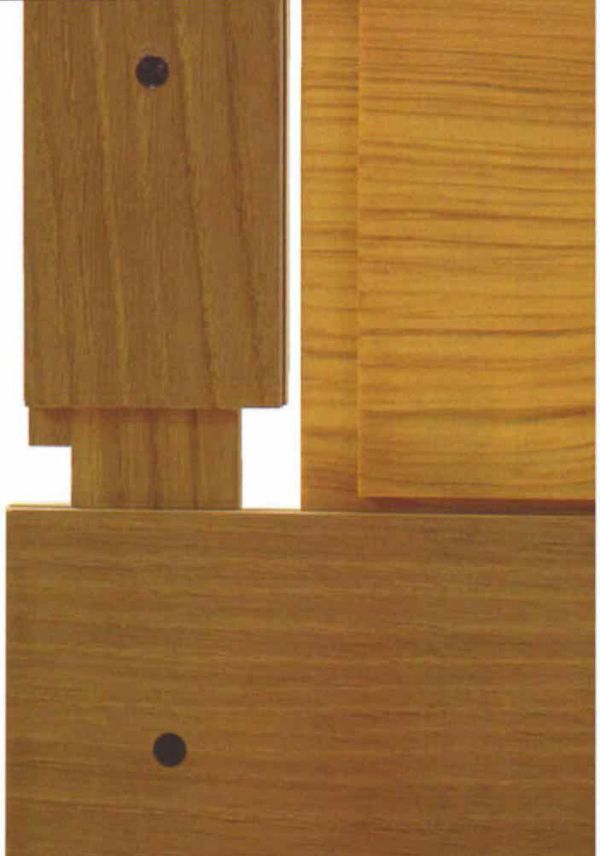
Synopsis: Woodworkers who work with solid wood must contend with its constantly altering width. The medieval discovery of the frame and panel revolutionized furniture design and frame-and-panel systems are as valuable today as 500 years ago. In this article, David Savage talks about the pros and cons of frame-and-panel construction, construction details, design considerations, and how to rough out stock. He describes how to make a basic frame and panel.
As long as we are daft enough to work in solid wood, we must contend with the fact that wood is constantly altering its width, Since wood moves only across its width, and not along its length, you can easily set up cross-grain constructions that restrict movement. This inevitably leads to disaster because the forces involved are immense. Just remember how ancient stoneworkers split marble slabs from a mountainside. They would drill a hole, insert one dry wooden peg and add water; the expanding peg would do the rest.
An unknown worker in medieval Europe solved this problem when he discovered the frame-and-panel construction. His goal had been to build a coffer that wouldn’t self-destruct. The sides and tops of these coffers usually split because traditional slab construction techniques called for rigidly fastening wide boards together with metal or wood cleats. I’ve always imagined that after experimenting with heavier and stronger slabs, our medieval friend realized that no panel was strong enough to resist splitting. Eventually he found he could build a strong frame from relatively narrow components and fill the spaces between the frame members with separate panels. The key to the system was fitting the panels loosely in grooves cut into the frame; this left the panels free to expand during wetter seasons and to contract when the humidity dropped.
This medieval discovery dramatically changed the history of furniture design, and the frame-and-panel system is as valuable today as it was 500 years ago. In fact, the technique has been called a hallmark of British furniture makers. Our furniture design, at its best, tends toward quiet confidence. Our oaks, elms and other native timbers are the envy of the world, and we like to use them with restraint and in the solid. Our weather is so changeable—damp and foggy one day, bright and dry the next—that if we didn’t use special techniques, such as frame and panel, most of our best carcase work would likely split right down the middle. Although contemporary woodworkers might make panels from plywood, particleboard, medium-density fiberboard or plastics (man-made, dimensionally stable materials which can fulfill the designer’s dreams more cheaply and more efficiently than solid wood), I still favor solid wood for my work, such as the piece shown in the top photo on the next page. So I will concentrate on solid techniques in this article.
Once you master the frame and panel, you might like to build a cabinet like mine. The basic dimensions are shown in figure 1 on p. 89. As you can see, the piece is basically two boxes with doors. The two boxes are connected with a simple frame-like middle section, just like the one that forms the base.
From Fine Woodworking #85
For the full article, download the PDF below:
Fine Woodworking Recommended Products

Dubuque Clamp Works Bar Clamps - 4 pack

Festool DF 500 Q-Set Domino Joiner

Stanley Powerlock 16-ft. tape measure






















Comments
Thank you David Savage for your wisdom over the years. RIP
Log in or create an account to post a comment.
Sign up Log in